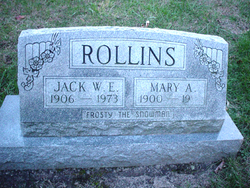And the third Christmas catch-up
3 Rudolph, The Red-Nosed Reindeer Mambo Billy May
Rudolph The Red-Nose Reindeer is a rare — possibly unique — example of a toy savings bank (with light-up nose) being turned into a hit song.
The Rudolph franchise started life as a story in the mail-order brochure for a Chicago department store, written by Robert L May. He later said that its ugly duckling tale was basically autobiographical - he was 'a scrawny kid, not accepted by my peers'.
The booklet was so successful with America's children that by the late 1940s, there was a whole Rudolph merchandising industry - stuffed toys, watches, toy film projectors, underwear and that savings bank with a nose that lit up each time a coin was dropped into it. (Oh, how I want one. Oh, how the Greeks could have done with one.)
Not that this helped May. As an employee, he didn’t own the Rudolph copyright. He was also in bad financial shape, wrecked by the medical bills for his dying wife. Then, as a kind gesture, his employer’s gave him the copyright, Rudolph became a song and May’s life and bank balance were transformed.
Rudolph was turned into a song by May's New York Jewish brother-in-law Johnny Marks. Described as ‘arrogant’, Marks all but threatened to break up the family if May didn’t let him — rather than the other songwriters who were chasing him — write the song. (He broke up the family soon enough anyway, divorcing May’s sister not long after.)
Something of a Christmas specialist, Marks also wrote I Heard The Bells On Christmas Day for Bing Crosby, A Holly Jolly Christmas for Burl Ives and Brenda Lee's Rockin' Around The Christmas Tree — while on the beach. Rudolph was published by St Nicholas Music Publishing Co — not of the north pole but 146 W54th St, NY NY.
In writing the lyrics — in April — Marks completely recast the story in May’s brochure. That original Rudolph didn’t always work for Santa, didn’t even live at the north pole and, though he did have a shiny nose and his horny deer pals did tease him about it, he wasn’t ashamed of it or anything. He lived in a regular reidndeer village. Santa found him by chance. When delivering Rudolph’s Christmas presents, he noticed a glow coming from the reindeer’s room — his red nose. Having had a succession of traffic accidents — in the fog, generally — Santa realised that Rudolph, or at least his nose, would be a solution to his collision problem. And the ever-rising insurance premiums for his sleigh, too. So he hired Rudolph as his lead reindeer, letting his red nose increase the sleigh’s night-time visibility.
Marks first offered Rudolph to that other Christmas specialist Bing Crosby. But he turned it down, as did Dinah Shore. So he took it to Gene Autry (see above). Autry didn’t like it either. But his wife Ina May did. So he recorded it, then debuted it live at Madison Square Gardens, in late 1949. It sold two million. For a long time, it was the second best all-time Christmas seller — to Bing’s White Christmas.
It has since been recorded by 500 performers. I haven’t got all of them. It just feels that way. As I discovered when I looked through the Rudolphs in my Christmas collection — a couple of boxes of Xmas CDs — Really Useful Boxes, of course — plus 750 Xmas tracks on my iTunes. I have at least thirty versions of Rudolph, by Dean Martin to Dolly Parton, Fats Domino to the Chipmunks. I’ve even got even a whole Rudolph CD, a German one, with sleeve notes and a great picture of Gene Autry with Rudolph himself. Well, maybe it’s not actually the reindeer but a man dressed up as one — the front legs do look about ten times as thick as the back ones and the facial expression does look decidedly static.
Then there are the other Rudolph songs. Chuck Berry’s fabulous Run Rudolph Run, of course. But also Johnny Horton’s They Shined Up Rudolph’s Nose and Homer & Jethro’s Randolph, The Flat-Nosed Reindeer.
Billy May was Frank Sinatra’s great arranger — see, hear, worship the Come Fly With Me album. He also had a reputation for creating parodies: he worked closely with the master musical parodist Stan Freberg. I suspect May and his band are not taking this with exactly sepulchral seriousness. I do like the idea of tropically grooving reindeer — and a version with a shout-out to Kriss Kringle.
PS1 There are eight reindeers pulling Santa’s sleigh: Dasher, Dancer, Prancer, Vixen, Comet, Cupid, Donder (sic), Blitzen. So where did Rudolph fit in the team? If Santa stuck with a four by two line-up, one of the other reindeers would have had to made way for him. If Santa made it a nine-deer team, Rudolph would have been stuck out front by himself.
PS2 Being really pedantic, given that a red light is a generally the signal for the rear end of a moving vehicle, shouldn’t Rudolph been on the back, pointing the other way? If he was on the front, other sleighs etc would probably have decided his shiny red nose indicated the back of Santa’s sleigh. Which could well have ended up with their running into it and Rudolph taking the first hit. Which wouldn’t have done much for Santa’s accident rate or insurance premiums. Rudolph’s health and welfare, either. Remind me, please, next time I write to Santa that I should raise these issues with him.
PS3 See below for more anomalous reindeers.
Next up, tomorrow Santa hits on girl, boyfriend hits back






